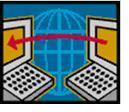Are You Getting Full Value from Your System, or Could Your System Use a Re-alignment?
By Ted Margison
[dropcaps type=”circle” color=”” background=””]A[/dropcaps] company was considering replacing the three systems they were using to run the business. One system handled financial information, a second handled production and a third handled service calls. The company felt that it would be more productive to consolidate into a single system.
The controller, who started with the company around this time, joined in the interviews to meet people and get a better understanding of how the company operated. Thirty-two (32) systems were identified. On top of this, he found the financial performance reports management had been using did not come from the corporate financial system but from isolated Excel documents. Thirty-two systems sounds like a lot, but someone recently told me that they had worked with a Fortune 500 company to consolidate databases and uncovered over 3,000 different databases (many of which were in Excel).
Right now, the odds are this is happening to you. How does this happen?
Over time, the organization goes through changes. Personnel changes occur, functional needs change and roles and responsibilities change. Often times, people forget what they were trained on because they only perform the function once or twice a year. Sometimes personnel changes mean the new person is not fully trained on all aspects of the system. As changes occur, people are not sure how to handle them within the current system and because they need to get something done now, they begin to look for workarounds such as using Excel. The greatest problem is that it goes unnoticed until it becomes so overwhelming that processes collapse. The issues with workarounds are:
• Data are being entered into multiple systems – potential for keying errors
• Extra time and effort is required
• Potential for the various systems to get out of sync
• Users tend to rely more and more on the workaround systems which then become the operational systems.
There are times when the current system simply does not handle a new requirement so, it’s either modify the system or use a workaround. The first step should be to check with the software vendor to determine if this requirement is addressed in any new release that the company has not installed or is in an upcoming release. If the requirement will be addressed in a new release due out in a few months then the interim workaround solution need only be a relatively inexpensive, temporary solution. If the vendor does not have any plans for addressing this requirement contact other companies using the software system to see if they have addressed this requirement. The key question here is whether to create a solution outside your current system or modify your current system. If you do any modifications, review them with the software vendor to ensure they will not impede implementing future releases from the vendor. If you create an external solution make sure you identify any points of ‘connection’ with the current system and develop controls to keep the systems in sync.
Challenges with New Implementations
Maybe you have just implemented a system and so this can’t be a problem, can it? Hopefully, the implementation effort went well with a smooth transition. However, more often than  not, transition is not smooth so, users hold onto the workaround systems they were using because they still need to get things done and they are not fully comfortable with the new system.
not, transition is not smooth so, users hold onto the workaround systems they were using because they still need to get things done and they are not fully comfortable with the new system.
Security is often a major concern during implementation. Great care is taken to ensure users are restricted to just the functions and reports that apply to their job. I have seen numerous implementations where users are using workaround solutions because the system does not provide a report they need or perform a task they need to do; only to find out that the system really does meet their needs – the functions and reports had been hidden from the user. IT had based the set-up of user menus on perceptions of what was involved in a job position. Unfortunately, perception does not always match reality.
• When implementing new systems try to keep open access to as many functions and reports as possible (taking into account appropriate segregation of duties).
• As accountability is defined, or re-defined, for each person, ensure the functions and reports are aligned accordingly.
Past problems are often carried forward to the new system: “The reports that come from our corporate system are the lifeblood of the company. We need to ensure that each report  is reproduced in the new system exactly as it is now.” the CEO directed. “Talk to everyone and make sure you understand exactly how each report is used so that we can be sure the new system can produce them.” Actually, 98% of all information on the corporate system reports was thrown out. Users took selected bits and pieces of information from the reports and put them into Excel documents along with data from other sources to produce reports for management. Converting the corporate system reports would perpetuate the need for workaround systems.
is reproduced in the new system exactly as it is now.” the CEO directed. “Talk to everyone and make sure you understand exactly how each report is used so that we can be sure the new system can produce them.” Actually, 98% of all information on the corporate system reports was thrown out. Users took selected bits and pieces of information from the reports and put them into Excel documents along with data from other sources to produce reports for management. Converting the corporate system reports would perpetuate the need for workaround systems.
A major problem with new implementations is too much change all at once – users get overwhelmed and return to familiar tools (workaround systems). Traditionally, implementation focuses on identifying a desired new way for how to do business and then rolls out the new system. One Friday night the current system is turned off and on Monday users start with the new system: new tools, new concepts, new terminology, new processes, new workflows, new roles and responsibilities and even new organization structures. Is it any wonder that this heralds a period of disruption, despite preparation efforts? This ‘big bang approach’ to change is too much for organizations. Major changes take time to institutionalize and usually involve a culture change.
Sometimes, when new systems are being implemented companies modify them to exactly fit the current operations, eliminating flexibility. When operations need to change, the system is unable to adapt without heavy modifications. When this happens – workarounds!
• Avoid doing extensive modifications during initial implementation – implement ‘as vanilla as possible’. Take six months, preferably twelve, to learn the different ways of using the system to handle various issues that arise.
Have users log issues they have difficulty addressing with the system and identify what they did to handle each issue.
• Review any desired modifications with the software vendor to determine if this fits into their R&D efforts. Avoid any modification that restricts your ability to implement new releases from the software vendor. You are better off to create an external sub-system that interfaces with the new system.
Solution Approach
Survey each employee to identify which systems they use and how they use them (this includes manual systems). In particular, ask them what issues cannot be addressed by the primary system and which systems, or tools, they use instead.
For business management efforts have each manager identify key controls, such as ensuring on-time delivery. Have the managers identify what information is needed and where they expect the information comes from. Then have each employee identify what system they use to provide each piece of information. On an ongoing basis, have employees identify situations in which they could not use the current system and had to use an alternate tool.
Review the surveys and logs to determine:
• Potential risks with current workarounds
• Which workarounds can be addressed by current system or new release
• Which workarounds need a more formal solution
Looking to Replace the Current System
If you have decided that your system needs to be replaced, take heart – this is not as daunting as it might appear.
Finding the right software package is straightforward. Packages can be divided into ‘solution classes’; identifying a few key requirements of your operations will determine the right  solution class. Any package in the solution class will meet your key functional requirements. The next step is to pick the right vendor and the package that has an intuitive ‘look and feel’ to your users – it will be easier for users to understand this and use this system. This is where the product demonstration is important. Be sure that the demonstration focuses on your business; in particular, ‘a day in the life of’ your company.
solution class. Any package in the solution class will meet your key functional requirements. The next step is to pick the right vendor and the package that has an intuitive ‘look and feel’ to your users – it will be easier for users to understand this and use this system. This is where the product demonstration is important. Be sure that the demonstration focuses on your business; in particular, ‘a day in the life of’ your company.
Do not spend all your time and money on finding the right package. Implementation is key. Try to implement as close to your current operating environment as possible. Make sure you identify the current workarounds and determine how to address them with the new system. Do not make massive changes in processes, roles and responsibilities. Once the new system is in place, focus on accountability. Ensure that accountability is properly defined for each employee and restructure process, roles and responsibilities to align with accountability. Adjust the system as well to align with accountability.
Permission is needed from Lighthouse Consulting Services, LLC to reproduce any portion provided in this article. © 2014
Ted Margison is a Senior LCS Consultant and has over 30 years experience in operations management and process improvement. Ted worked for Ernst & Young in their manufacturing & distribution practice and then headed up one of PriceWaterhouse’s manufacturing & distribution practices on the west coast. You can contact Ted at ted@lighthouseconsulting.com.
If you would like additional information on this topic or others, please contact your Human Resources department or Lighthouse Consulting Services LLC, 3130 Wilshire Blvd., Suite 550, Santa Monica, CA 90403, (310) 453-6556, dana@lighthouseconsulting.com & our website: www.lighthouseconsulting.com.
Lighthouse Consulting Services, LLC provides a variety of services, including in-depth work style assessments for new hires & staff development, team building, interpersonal & communication training, career guidance & transition, conflict management, 360s, workshops, and executive & employee coaching. Other areas of expertise: Executive on boarding for success, leadership training for the 21st century, exploring global options for expanding your business, sales and customer service training and operational productivity improvement.
To order the books, “Cracking the Personality Code” and “Cracking the Business Code” please go to www.lighthouseconsulting.com.





